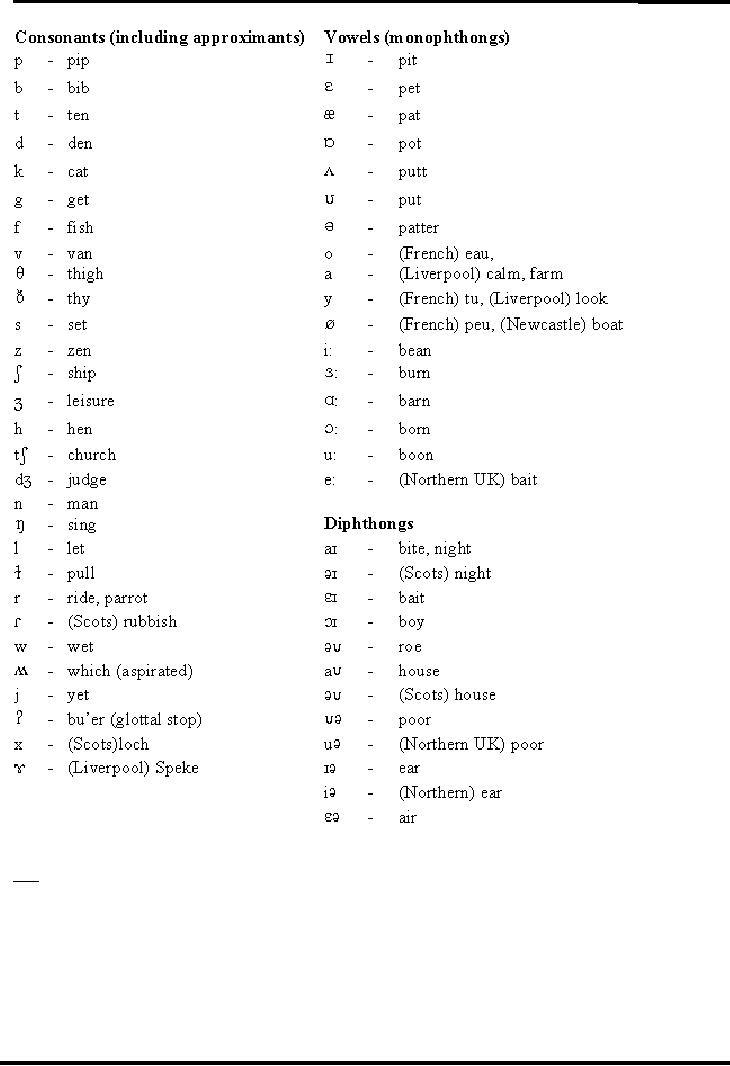 |

Journalistic
Writing MCM310
VU
LECTURE
42
BROADCAST
AND WEB NEWS
WRITING
"Writing
is hard work- it's only easy
for those who haven't
learned to write."
Writing
broadcast news can be
divided into two story
types. Both types are
based on the time it takes to
present
the information to your targeted
audience.
News
Features are
stories between
3 and 7 minutes long about things
that have happened in the
past. The
ideas
and pictures for feature
news stories are usually
planned out on a storyboard. Writing news
feature
storyboards
involves explaining how the audio
(sounds) and the shots,
(visual details) will
present the
researched
background facts and
information.
Breaking
news and
daily
announcements are
stories that are happening today or in
the near future. Breaking
news
and daily announcements are
usually written into a
teleprompter to be read on-air by
announcers. Writing
breaking
news and daily announcements
involves presenting information in
short
stories between 15
seconds
and
1 minute long. Sources
of information may be limited.
The information can be incomplete or
possible
inaccurate.
Usually, you have a very short time to
contact sources to confirm or
correct information. A
rule-of-
thumb
that advertising writers use to estimate
a story's time is that at
a normal speaking pace, 65
words
equal
30 seconds.
Whether
you are writing news
features, breaking news or daily
announcements, the following are
basic rules to
follow:
1.
WRITE CONVERSATIONALLY: Tell a
story without being boring.
Say it as though you were
telling
your
best friend or your Mom or
Dad with enthusiasm.
2.
WRITE CONCISELY: Use
short sentences. Use one
idea per sentence. Avoid
words you don't
need.
3.
SIMPLIFY COMPLICATED IDEAS:
Present
straight-forward facts in a way that
does not talk down
to
people.
Remember, they will only
hear the information once, so it is
important that what they hear is
easy
to
understand.
4.
RESEARCH & VERIFY ALL INFORMATION:
Know
what you are talking about.
Check the facts.
Get
first hand information, not
second hand opinion. Research
will tell you which
way your story will go
in
finding
the truth. Be objective; there are
always two sides to a
story.
5.
AVOID NEWSPAPER CONSTRUCTION IN YOUR
WRITING: The
viewer "hears"
your
story.
They
can not read your
script. Don't use terms
like, "In
the Headlines" -
"Front
Page News" or
"Cover
Story" Newspaper words: "vie"
"nab" "bust" "laud" "grill"
"foe" "woe" "fray"
"hike"-
for
raise or increase "ink"-for
signs "pact"
"opt" "eye"-for
watch "blast"
"rap" "hit"-for
criticize
"slay,
slew, or slain" "youth" -for
young person "former,
latter, or respectively" or
"Accord"
-for
contract
or agreement. Viewers want to hear
you speak naturally- like they do in
every-day conversations.
Don't
start or end stories with
prefabricated phrases -(headlines)
"It's
Official" "It Shouldn't Come
As
a
Surprise" "It Had to Happen
Eventually"
6.
DON'T SCARE THE VIEWERS: Why
would you start a story with
"This story is very complicated
and
confusing?"
Viewers don't want to know about the
labor pains, they just want to see the
baby!
166

Journalistic
Writing MCM310
VU
7.
DON'T GIVE ORDERS: "Listen
Up" or
"Attention"
Just
tell the information- don't
tell them what to
do
with it...
8.
DON'T BURY A STRONG VERB IN
A NOUN: Say,
"a
bomb exploded" not
"a
bomb explosion"
Use
"VIGOROUS
VERBS" for Go
Power!
9.
DON'T START A STORY WITH:
"As expected" or
"In
a surprise move" People
don't want the
expected
or like feeling as though they don't
know what's going on.
Phrases like "A
new development"
or
"Making
the news" are
redundant. Why else would it be on the
news?
10.
DON'T CHARACTERIZE THE NEWS AS
GOOD, BAD, INTERESTING, OR
SHOCKING:
Let
the viewers decide what good, bad,
shocking, etc is. What is
good for one person
might be bad for
another.
11.
DON'T START A LEAD SENTENCE WITH A
PARTICIPLE PHRASE (ING-WORD) OR
A
DEPENDENT
CLAUSE: We
don't say, "Needing
new shoes, I will buy a
new pair tomorrow."
The
best pattern for a broadcast
lead sentence is SUBJECT-VERB-OBJECT
(S-V-O) -
"I
bought new
shoes."
Don't
start a story with a quotation.
The viewers don't know if
the words are yours or
someone
else's.
Always put the source before the quote, it
sounds more natural. "Assistant
Principal Brown said,
"blah,
blah, blah." Don't
start a lead sentence with a
question. They sound like a
quiz show or
commercial.
Viewers want answers and
information- not
questions.
12.
DON'T START A STORY WITH "THERE
IS"- "THERE ARE" OR "IT IS":
"Is" and
"are"
are
not
"action
verbs." They
are "linking
verbs" as are
"have"
"seen" "feel" and
"become".
Is-Are-
Was-Were- and
Will
Be are
weak verbs. What viewers
hear first is crucial, if they
are going to keep
listening
and watching.
13.
DON'T START A LEAD SENTENCE WITH THE NAME
OF AN UNKNOWN OR
UNFAMILIAR
PERSON: If the
name means nothing to the
viewers, they won't keep listening.
Use a
title
or label before the name- "Seattle
newspaper photographer..." "Tacoma
mayor..."
"President..."
And
don't use personal pronouns
(he or she) to start a
story.
14.
DON'T WRITE A FIRST SENTENCE
WITH "YESTERDAY" OR "CONTINUES": Yesterday
is
"old
news." The
word "continues" tells
viewers that "nothing
is new." If
something is ongoing, find
a
new
angle to describe it. The
word "Details"
is a
dirty word! It's like the
fine print in a legal contract
and
tells
the viewer that, "there
is more, but we can't really explain all
that right now." Try to
be positive
in
your leads. Avoid using
"no"
or
"not"
in a
first sentence. Change
"did
not remember" to
"forgot."
"Did
not pay attention" to
"ignored"
etc
15.
DON'T START A STORY WITH "ANOTHER"
"MORE" OR "ONCE AGAIN": These
are
viewer/listener
turn-off words. What they
hear is "Old
News" or
"Just
the Same Old Thing."
Don't
try
to cram too much information
into a story. Give the viewer the
"highly
concentrated essence of
the
story."
Remember,
the audience only gets to
hear and see the piece once.
(Who records the news on
their
VCR
so they can review it later? Not
normal people!) People have
difficulty processing a steady
stream of
facts
- (think of the teacher who
just lectures.) Waste
Words: "in order" "in the
process" "literally"
"actually"
"really" "suddenly" "gradually"
"finally" "flatly" "personally"
"officially"
167

Journalistic
Writing MCM310
VU
"miraculously"
"local" "nearby" "area" "separate" "a
total of" "then" "the fact
that"
"meanwhile"
"on a lighter note"
16.
DON'T LOSE OR FAIL TO REACH THE
VIEWERS: Talk
"to"
them,
not "at"
them.
Don't make
factual
errors! If you lose your
credibility, you lose your
audience. Learn to spell correctly and
properly
pronounce
names. If you are not
sure about something, look it up or
find someone who does
know!
Writing
is hard work. It's only easy
for those who haven't
learned to write. Confucius should have
said,
"Easy
writing equals hard listening. Hard
writing equals easy
listening!"
BROADCAST
STYLE
The
following is intended to work as a
reference list for you to
use while writing your
stories. Please refer to
this
guide while writing stories
in lab. In this context, the phrase
"broadcast style" refers to the actual
look of
the
written material in scripts
which are intended to be read
"on the air." It is to be assumed
that your written
material
will be used in an actual
broadcast. Therefore you
must pay attention to such
elements as punctuation
and
abbreviations. Most of these guidelines
come from Wimer & Brix
in their book "Radio and TV
News
Editing
and Writing." In some cases
their suggestions have been
altered.
General
Rules:
Double
space
Most
stations today are double
spacing their scripts. Your
formatting steps will automatically
double space your
scripts).
In
the upper left corner of each page
write the following:
(You
can pencil this in after the script comes
off the printer).
�
Reporter's
name
�
One
or two word slug
�
Date
�
Page
Number
Place
individual stories on separate
pages.
Place
### marks at the end of each
story.
Capitalization:
There
has been a raging debate
about which style is most
suitable -- a mixture of upper and
lower-case or all
upper-case.
In the early years of broadcasting, the
poor quality of the script
appearance on a teleprompter
required
the use of all upper-case
letters. However, as Teleprompters
have improved these rules,
have largely
changed.
It is argued that lower-case
letters, with their
ascenders and descenders,
have varied shapes
which
readers
more easily pick up. When
scripts are done entirely in
upper-case, all the letters have the
same block-
shape.
For the purposes of this class
your scripts should be upper and
lower-case.
Abbreviations:
In
general, do not use
abbreviations.
Exceptions:
MR.
MRS.
MS.
DR.
ST.
LOUIS
ST.
PAUL
FT.
LAUDERDALE
(These
are considered "common
usage" and are preferred by
most newscasters).
Exceptions:
F-B-I
Y-M-C-A
G-O-P
F-C-C
(These
are well known and readily
identifiable by their initials. Also,
note that a hyphen is used
between the
168

Journalistic
Writing MCM310
VU
letters
when you want the newscaster to read
each letter
separately).
Abbreviations
of names of some organizations
are pronounced as a single word
and do not require
hyphens.
NATO
SEATO
When
referring to the United States, the
abbreviation U-S may be used
if it is used as an adjective.
YES:
"HE WORKS FOR THE U-S INFORMATIONS
AGENCY" OTHERWISE: "BOLIVIA
WANTS
HELP
FROM THE UNITED STATES"
Phonetic
Spelling:
You
must indicate how hard to pronounce words
and names are pronounced.
Type the phonetic spelling in
parenthesis
after the name. Break down the
phonetic spelling into syllables by
using hyphens. Use all
capital
letters
in the syllable to be stressed, and
lower case letters in the
other syllables. Use
phonetic spelling every
time
you
use
the
word
or
name,
not
just
the
first
time.
The
following is an IPA guideline that can be
used to spell out words
phonetically.
169

Journalistic
Writing MCM310
VU
OR
YOU
CAN FOLLOW THE FOLLOWING SYSTEM TO
SPELL OUT DIFFICULT
WORDS
PHONETICALLY
VOWELS
A
Use
AY for long A in
mate.
Use
A for short A as in cat.
Use
AI for nasal A as in
air.
170

Journalistic
Writing MCM310
VU
Use
AH for short A as in father.
Use
AW for broad A as in talk.
E
Use
EE for long E as in
meet.
Use
EH for short E as in get.
Use
UH for hollow E as in the or le (French
prefix).
Use
AY for French long E with
accent as in pathe.
Use
IH for E as in pretty.
Use
EW for EW as in few.
Use
EYE for long I as in
time.
Use
EE for French long I as in
machine.
Use
IH for short I as in pity.
O
Use
OH for long O as in note, or ough as in
though.
Use
AH for short O as in hot.
Use
AW for broad O as in fought.
Use
OO for O as in fool, or ough as in
through.
Use
U for O as in foot.
Use
UH for ough as in trough.
Use
OW for O as in how, or ough as in
plough.
U
Use
EW for long U as in
mule.
Use
OO for long U as in rule.
Use
U for middle U as in
put.
Use
UH for short U as in shut, or
hurt.
CONSONANTS
Use
K for hard C as in cat.
Use
S for soft C as in
cease.
Use
SH for soft CH as in
machine.
Use
CH for hard CH or TCH as in
catch.
Use
Z for hard S as in disease.
Use
S for soft S as in
sun.
Use
G for hard G as in gang.
Use
J for soft G as in
general.
Punctuation:
The
rules of punctuation in the English
language do not hold for
broadcast announcers.
Do
not use the following marks
on broadcast scripts:
:
; ( ) except for phonetics
and nicknames
&$@%
The
most common punctuation marks
are commas and periods. Do
not use colons or
semi-colons.
The
dash is used frequently as a
substitute for other
punctuation marks. (The dash is a
double hyphen --).
The
hyphen is used to indicate when letters
are to be read as such.
C-I-O, Y-M-C-A
The
hyphen is also used to in telephone
numbers and license plate
numbers.
Don't
use quotation marks. It is
best to paraphrase or rephrase direct
quotations. When direct quotes are to
be
used
you should use tell the
audience that you are
quoting
EXAMPLES:
WE
QUOTE HIS EXACT
WORDS-
HE
SAID-AND WE QUOTE-
HE
WENT ON TO SAY-
AS
HE PUT IT-
171

Journalistic
Writing MCM310
VU
Numbers:
Avoid
using lists of
numbers.
Round
off large and detailed
numbers.
Use
figures instead of writing
out the numbers. The
exceptions are one and
eleven which should be
written
out.
For
numbers over 999, use a
combination of spelling and
figures.
EXAMPLES:
THERE
ARE ELEVEN CHILDREN IN CLASS
TODAY.
THERE
ARE 15 CHILDREN IN CLASS
TODAY.
THERE
ARE 11-HUNDRED STUDENTS
ENROLLED IN SCHOOL
NEW
CENSUS FIGURES SHOW
25-THOUSAND-258 PERSONS LIVE IN
HOMETOWN.
Exceptions:
Always
write out a number if it begins a
sentence.
Always
spell out fractions.
EXAMPLES:
TWENTY-FIVE
PERSONS ATTENDED THE MEETING
OFFICIALS
SAY ONE-HALF OF THE MEMBERS
WERE ABSENT
Don't
use PM or AM Use THIS
MORNING, THIS AFTERNOON,
TONIGHT.
When
using addresses, dates, and
ordinals, use figures. Use
st, nd, rd, th after figures
to be read as ordinals.
Exceptions
to this are first and eleventh.
Always spell them
out.
Avoid
"PER" in news for the air.
Write it:
17-CENTS
A POUND
24-DOLLARS
A DAY
60
MILES AN HOUR
BROADCAST
NEWS ETHICS
In
groups, come up with a brief
statement which outlines your
policy with regard to each
of the following
legal/ethical
concerns. What will your
news organization's policies
be? Talk it over and
achieve some sort of
consensus.
1.)
Advance Examination of
Broadcasts:
Are
there any circumstances under
which a broadcast, or any
part of it, may be seen or
heard by outsiders
before
it is aired? If so, what are the
circumstances? Be very specific.
What
about advertisers?
What
about the police?
What
about "outtakes"?...material which won't
appear on the air.
2.)
Coverage of Civil Disturbances:
It
has been argued that
coverage by the news media,
and particularly television coverage,
causes or intensifies
the
very disturbances that are being
covered; that people who
seek publicity for their
grievances will
deliberately
create of intensify a disturbances so
that they may "perform" before
reporters, cameras,
and
microphones;
and that, consequently, minimizing or
omitting coverage will minimize or
eliminate civil
disturbances.
172

Journalistic
Writing MCM310
VU
What
do you think of this
assessment?
How
can a television news organization do
it's job and still
address these
concerns?
What
specific steps can be taken
to avoid inciting further
disturbance?
What
is your responsibility in obeying police orders
regarding your presence at the
scene?
If
you disagree with an officer's
orders, what should you
do?
3.)
Commercial Messages:
Should
employees of your organization be allowed to
participate in commercial messages? If
not, why not? If
so,
who and why?
4.)
Interviewing Accident Victims and Their
Relatives:
Under
what circumstances, if any, should
broadcast news employee's
interview people who have
been involved
in
tragic or traumatic situations?
How should such interviews be conducted?
i.e. what sort of questions should
you
ask and which ones
would you avoid? What
about funerals? Should you
cover the funeral of a
prominent
person
or the funeral of a family member? If
you decide to cover a funeral,
how should it be handled?
5.)
Limitations on Interviews as Requested by
Interviewees:
Occasionally,
potential interviewees seek to
impose limitations on the manner in
which the interview may
be
conducted
or used. What basic
standards should such requests is
measured against?
Would
you agree to submit questions in
advance?
Would
you agree to refrain from
asking specific
questions?
Would
you let the interviewee participate in the
editing of the recorded
material?
Would
you make a commitment that a
recorded interview, or portion of the
interview, will be
broadcast?
Would
you agree to not edit
any portion of the interview?
Finally,
what if such requests are
made....how would you handle
it...would you fail to do the
interview at all?
Oh,
one more thing...if the interviewee
wants to dictate that who
will conduct the interview, what will
you do?
What
will your policy be on this
matter?
6.)
"Reaction Shots" and "Reverse
Question Shots" on
Interviews:
Reaction
Shots:
Shots
of a reporter shot out of natural
time sequence are sometimes
used to cover edits within
an interview.
Will
your station allow such a
practice?
What
are some of the concerns
with regard to this
practice?
If
you decide to allow this
practice...What specific precautions
will you ask reporters
and editors to take?
Reverse
Question Shots:
Shots
of a reporter re-asking a question out of
natural time sequence which are
used to get the question on
tape
without
needing two cameras at the
interview site.
Will
your stations allow such a
practice?
What
are some of the concerns
with regard to this
practice?
If
you decide to allow this
practice...What specific precautions
will you ask reporters
and photographers to
take?
If
the interviewee has to leave before you
get the re- ask shot...will
you shoot it and use it
anyway?
Should
you be able to shoot the re-ask question
at a different time and a different
location?
7.)
Outside Produced Broadcasts:
These
are often news "packages"
produced by people who are not a
part of your news
organization.
Should
there ever be a time when
you would accept for
broadcast a package produced by an
outside group?
If
so, what conditions must be
met by the outside
producers?
What
about the use of raw footage shot by an
amateur with a home
camcorder? What will your
station's policy
be?
How will such material be
handled?
173

Journalistic
Writing MCM310
VU
8.)
Sound:
Should
sound effects be used to
simulate natural sound?
What
about "non-synchronous" natural sound
(sound shot at the same
scene and same general time,
but not
the
actual sound recorded with
the shot being shown). Should the use of
"non- synchronous" natural sound
be
allowed?
If so, under what limitations
9.)
Staging:
In
broadcast news the best situation is to
photograph news as it happens.
But, what about "staging"
certain
events
or occurrences? Will you
allow staging under any
circumstances?
If
not, why and what sort of
problems might you
encounter?
Are
there distinctions between "hard
news" stories and "feature"
stories with regard to
staging certain
activities?
If
you allow some staging, what
sort of circumstances?
Suppose
you are doing a feature
story on a woodcarver who wasn't planning
to do any carving today. If
you ask
him
or her to "carve" for your
camera are you staging? If
not, what makes this situation
different?
In
general, what will your
policy be on "staging?"
10.)
Gifts or Favors:
Employees
must discharge their journalistic
responsibilities with the appearance, as
well as the fact, of
complete
independence
and integrity. Outright
payment either for news
coverage or a particular slant on a story is
illegal.
Yet,
there are other situations
which fall into a gray
area and are handled
differently by different
stations.
What
will your station's policy
be on the following?
*
Transportation
provided by others. (Air or
land)
*
A
"free lunch".
*
Free
concert or sport tickets.
*
Free
lodging.
*
Free
ski lift tickets or season
passes.
Can
you make a distinction
between your activities as a reporter
and your "personal"
activities? (I.e. you
may
argue
that you accepted free
sports tickets, not in your
role as a reporter, but in a
role not related to
your
employment
by the station).
What
about "personal and intimate"
relationships with those you
might be asked to report on?
How would you
handle
this? (Could such activity
be construed as a "gift" or
"favor"?)
11.)
Outside Activity: Controversial
Issues:
This
involves news employee who
takes a position on a controversial
issue. News employees have
opinions and
want
to act as socially responsible
citizens of a free society.
For the rest of the population
that means being
involved
in trying to influence an issue. It might
mean joining a citizens
group or mobilizing supporters
for a
political
candidate.
Can
a news employee publicly
take a position and still
act as an objective journalist?
Should
a news employee be allowed to work on
political candidates
behalf?
Should
a news employee be allowed to work
for a public interest
group?
What
will your stations policy
be? Be very specific.
174

Journalistic
Writing MCM310
VU
12.)
Computer Simulation of News:
Advances
in computer technology have now made it
possible to create virtual
cities to simulate
fires,
explosions,
accidents and other news.
This allows the station to get
"compelling" video before actual
video
arrives
from the scene (if it
arrives at all). A company called
"Earth Watch" has primarily
sold such systems
for
weather
broadcasts to allow so-called
"fly-through" weather simulations.
However, their new product
("Reality
3-D")
now permits such advanced
graphics to fly-into (helicopter
perspective) breaking news anywhere
on
earth
via a virtual environment. The
company has shown examples
of the technology in Atlanta,
Minneapolis
and
Washington, D.C.
What
do you think of the use of this
new technology?
What
potential problems do you see in
using simulations to illustrate
news?
13.)
Plane Crashes:
Before
reporting the fact that a plane
has crashed, what information should
first be ascertained?
WEB
NEWS WRITING
The
Difference between Paper and
Online Presentation
In
print, your document forms a whole
and the user is focused on the entire
set of information. On the
Web,
you
need to split
each document into
multiple hyperlinked pages
since users are not
willing to read long
pages.
Users
can enter
a site at any page and
move between pages as they
chose, so make every page
independent
and
explain its topic without
assumptions about the previous page
seen by the user.
Link
to background or explanatory information to help
users, who do not have the
necessary knowledge to
understand
or use the page
Make
the word count for the
online version of a given topic about
half
the word count used
when writing for
print:
Users find it painful to
read too much text on
screens, and they read
about 25 percent more slowly
from
screens than from
paper.
Users
don't like to scroll through
masses of text, so put the
most important information at the
top.
Web
users
are impatient and
critical: They have not chosen
your site because you
are great but because
they
have
something they need to do.
Write in the "news you can
use" style to allow users to
quickly find the
information
they
want.
Credibility
is
important on the Web where
users connect to unknown
servers at remote locations.
You have to
work
to earn
the user's trust,
which is rapidly lost if you
use exaggerated claims or
overly boastful language;
avoid
"marketese" in favor of a more objective
style.
A
few hyperlinks to other sites with
supporting information increase the
credibility of your pages. If at
all
possible,
link
quotes from
magazine reviews and other
articles to the source.
The
Web is an informal and
immediate medium, compared to
print, so users appreciate a
somewhat informal
writing
style and small amounts of
humor.
Do
not
use
clever or cute headings
since users rely on scanning to
pick up the meaning of the
text.
Limit
the use of metaphors, particularly in
headings: Users might take
you literally.
Use
simple
sentence structures:
Convoluted writing and complex
words are even harder to
understand
online.
175

Journalistic
Writing MCM310
VU
Puns
do not work for
international users; find
some other way to be
humorous.
Add
bylines and other ways of
communicating some of your personality. (This
also increases
credibility.)
The
Web is a fluid medium:
Update
pages as time
goes by to reflect all changes.
Statistics, numbers,
and
examples
all need to be recent or
credibility suffers.
For
example: Before a conference, the page
about the event might point to a registration
form; afterward, point
to
slides or presentation transcripts
instead.
Source:
http://www.mashell.com
English
Studies, the University of Nottingham,
UK
http://www.sun.com/980713/webwriting/wftw1.html
176
Table of Contents:
- INTRODUCTION TO JOURNALISTIC WRITING:Practical, THINGS TO KNOW
- QUALITIES OF GOOD WRITERS
- QUALITIES OF GOOD WRITERS
- QUALITIES OF GOOD WRITING:Achieve appropriate readability:
- QUALITIES OF GOOD WRITING:Be concise, Be creative, Be correct
- THE PROCESS OF WRITING:INVENTION, WHEN YOU START TO WRITE
- THE PROCESS OF WRITING II:ORGANIZING, DRAFTING, REVISING
- ALL ABOUT WORDS:HOW WORDS ARE FORMED?:SUFFIXES
- DICTIONARY-A WRITER’S LANGUAGE TOOL:KINDS OF INFORMATION
- PARTS OF SPEECH:Noun Gender, Noun Plurals, Countable Nouns
- BASIC CLAUSE PATTERNS
- ACTIVE AND PASSSIVE VOICE
- MODIFIERS AND SENTENCE TYPES:COMPOUND SENTENCES
- REPORTED SPEECH:Indirect Questions, Direct commands
- GRAMMATICAL SENTENCE – ISSUES:SUBJECT-VERB AGREEMENT
- GRAMMATICAL SENTENCE – ISSUES II:SENTENCE FRAGMENTS
- EFFECTIVE SENTENCE:PARALLELISM, NEEDED WORDS, SHIFTS
- STYLE: GUIDELINE AND PITFALLS I:COLLOQUIAL VS FORMAL, CIRCUMLOCUTION
- STYLE: GUIDELINE AND PITFALLS II:AMBIGUITY, REDUNDANCY, EUPHEMISM:
- PARAGRAPH WRITING: TYPES AND TECHNIQUES:STRUCTURE
- PARAGRAPH WRITING: TYPES AND TECHNIQUES:Putting on Our Play
- ESSAY WRITING:VARIOUS STRATEGIES FOR ESSAYS, PROMPTS
- SIGNAL WORDS:Non word Emphasis Signals
- EXPOSITORY WRITING:LOGICAL FALLACIES, APPEAL TO EMOTION
- THE WRITING STYLES: REPORT and NARRATIVE WRITING, SHORT REPORTS
- THE WRITING STYLES: DESCRIPTIVE AND PERSUASIVE WRITINGS, Observation
- RESEARCH WRITING AND DOCUMNETING SOURCES:Handling Long Quotations
- Summary and Précis Writing:CHARACTERISTICS OF GOOD SUMMARY
- Punctuation:THE PERIOD, THE COMMA, THE SEMICOLON, THE COLON
- MECHANICS:ABBREVIATIONS, NUMBERS, SPELLING, THE HYPHEN
- READING SKILLS FOR WRITERS:EDUCATED READING, STEPS
- PARTS OF A NEWSPAPER:Box-out, By-line, Caption, Exclusive, Feature
- THE LANGUAGE OF THE NEWSPAPERS II:BROADSHEET NEWSPAPER
- News Writing and Style I:WHAT TO LOOK FOR IN A NEWSPAPER
- NEWS WRITING II:Accuracy, Clarity, Style, Qualities of Effective Leads
- EDITORIAL WRITING:WRITING AN EDITORIAL:STRUCTURING AN EDITORIAL
- WRITING FEATURES:GENERATING FEATURE STORY IDEAS
- WRITING COLUMNS:Column and a news report, Purpose, Audience
- WRITING ARTICLES FOR NEWSPAPERS:The Heading, The Lead
- WRITING ANALYSIS:purpose, scope, method, results, recommendations
- LETTERS TO EDITORS:Four important aspects about letters, Organizing letters
- BROADCAST AND WEB NEWS WRITING:WRITE CONCISELY, BROADCAST STYLE
- WRITING PRESS RELEASE, REVIEWS AND OBITUARIES:Summary of Content:
- THE ART OF INTERVIEWINGS
- FINAL THOUGHTS:Practical, Job-Related, Social, Stimulating, Therapeutic